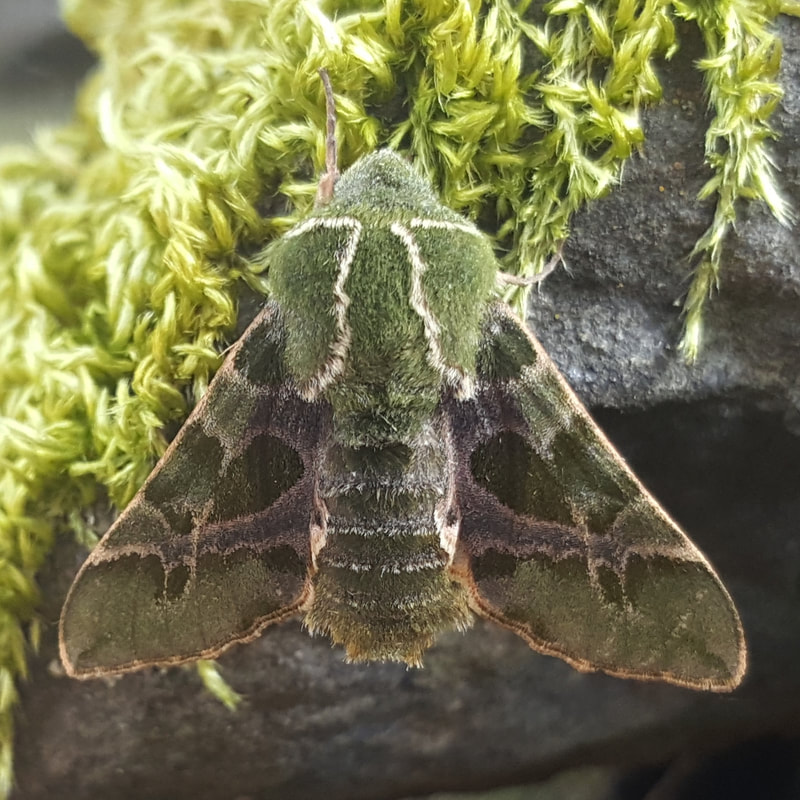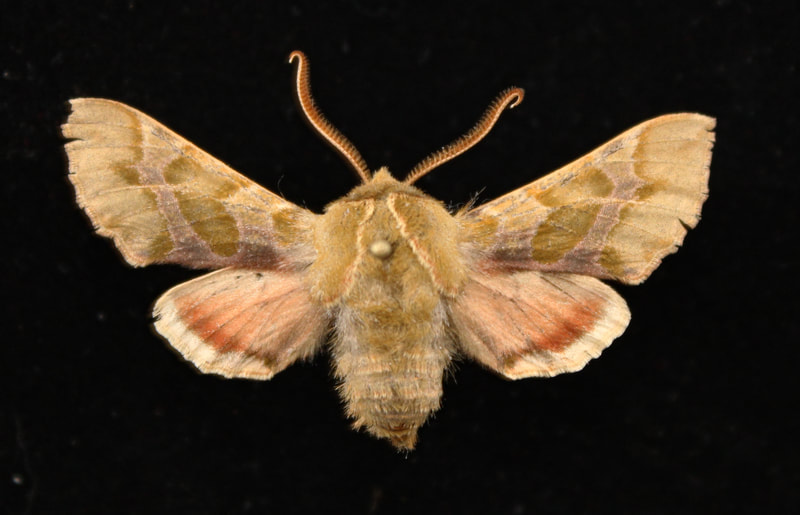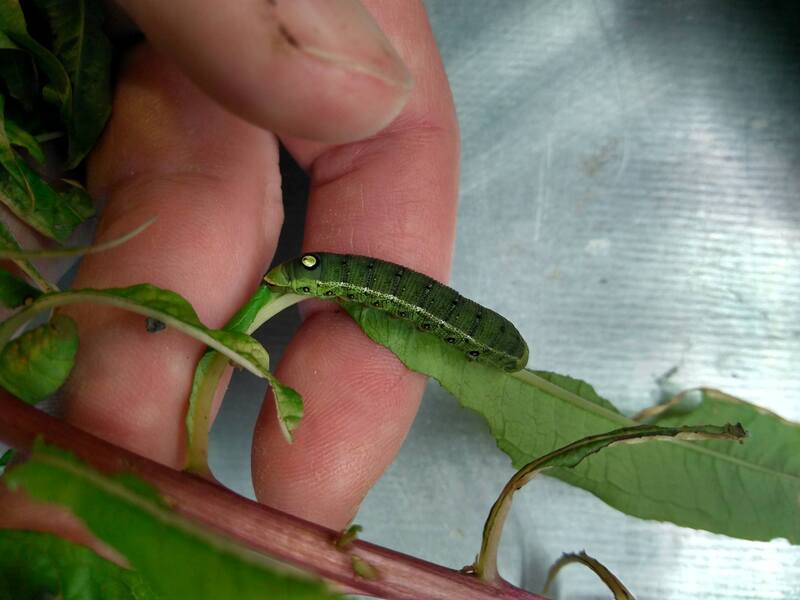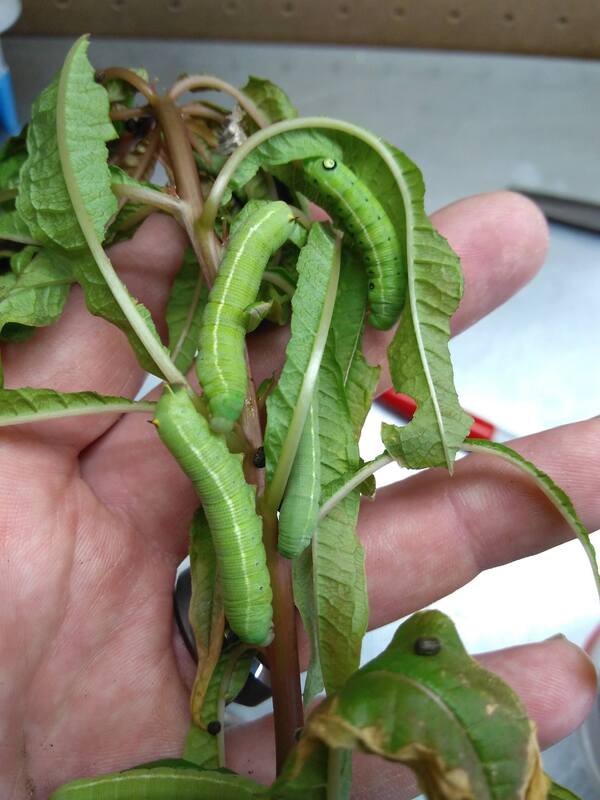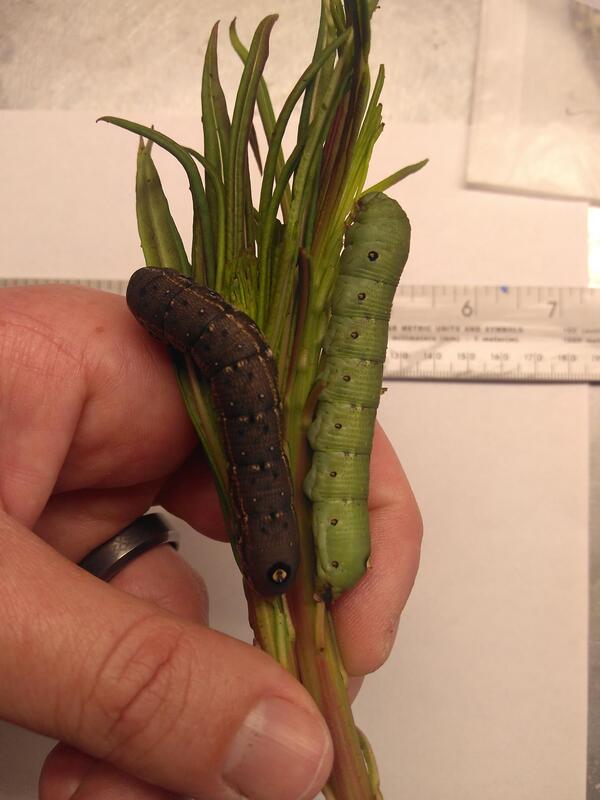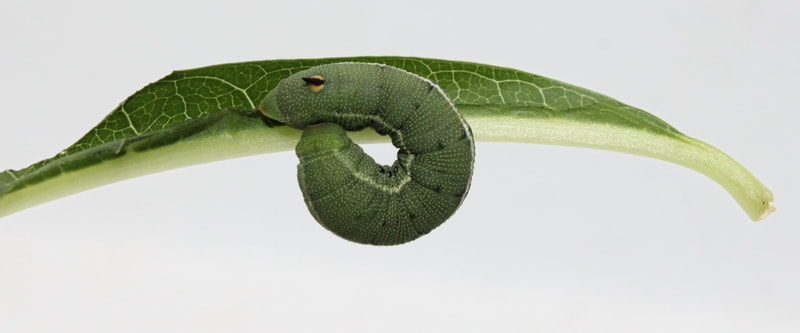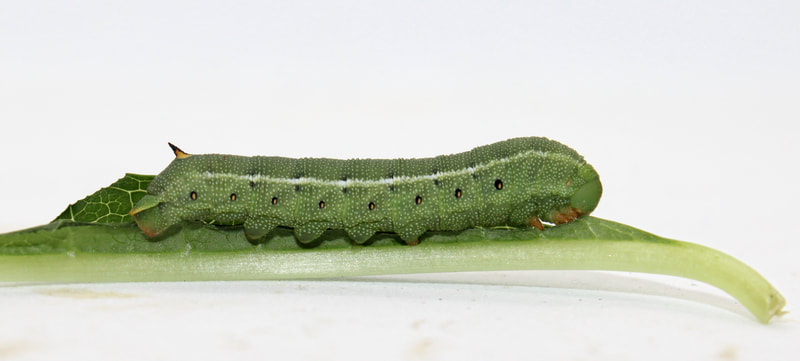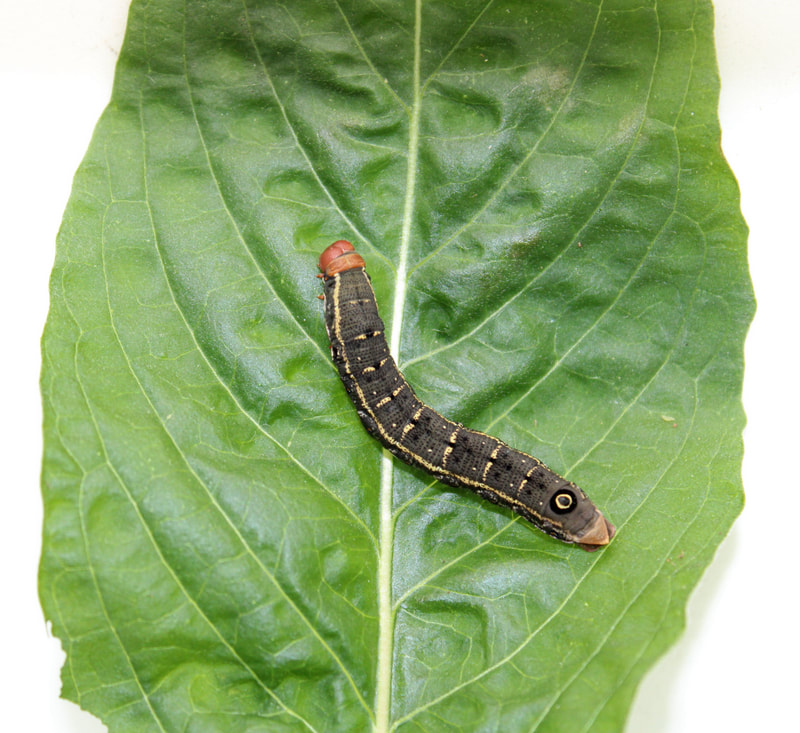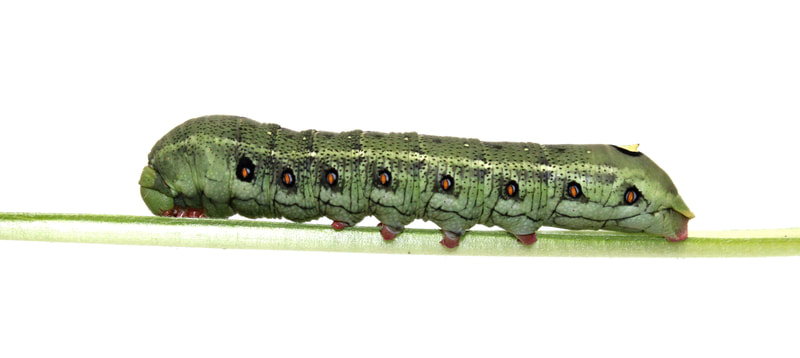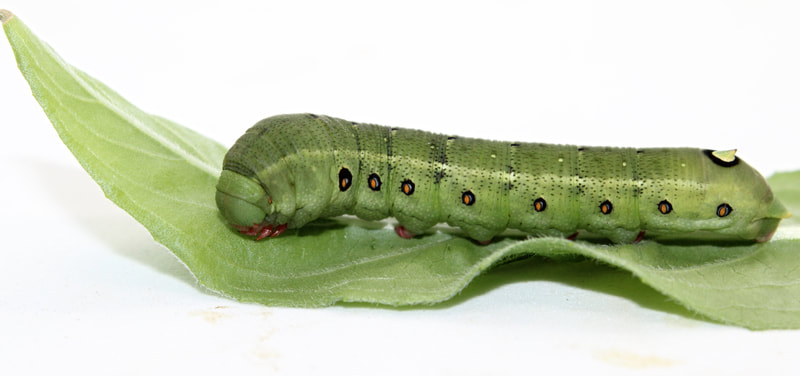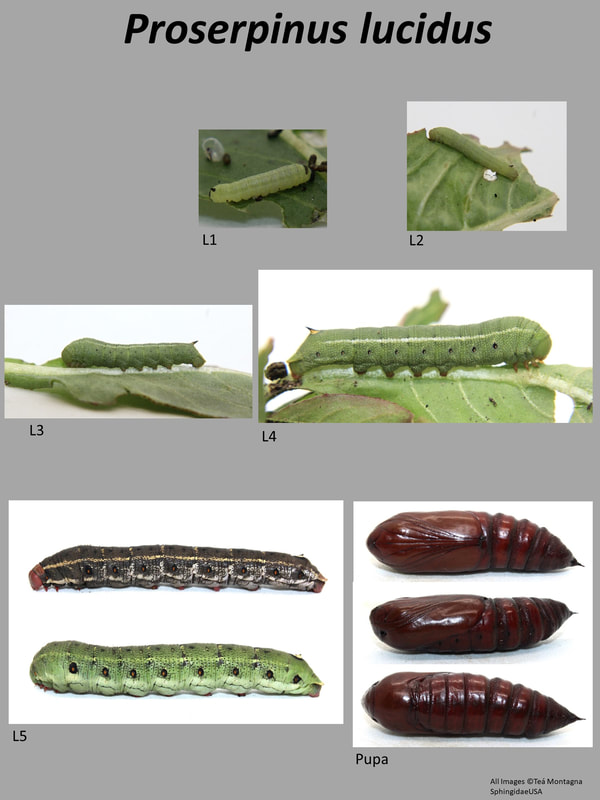|
Common Name: Pacific Green Sphinx, Bear Sphinx
Ecology and Life History: This may be one of the earliest flying Sphingidae in the USA. It flies in the Northwest in February and March, but in California from December through March. Despite early flight times, it only has a single generation per year. It seems to be heavily attracted to light, with both sexes showing up at lights during the right season. Eggs are laid, in clumps in captivity, but likely in smaller clumps in the wild. It is also conceivable that eggs are laid singly, but multiple per plant. The larvae go through a number of plain instars before becoming more striking with a fake eyespot in the final instar. Habitat and Searching for Larvae: Larvae consume species of Oenothera, Epilobium, Chamaenerion, and other plants in the Onagraceae. Larvae seem to feed toward the top of the plant, consuming young leaves first. As they grow, they defoliate plants quickly and will move to another. When disturbed, larvae will curl up and then fall to the ground. Larvae are likely present from March to June across their range. Older larvae rest at the base of the plant during the day. Searching the woody basal stems of their hostplants may yield larvae. Rearing Notes: Eggs are easily obtained by placing a female in a paper bag and misting the inside of the bag heavily with water (17). Larvae are polyphagous, but seem to show regional preferences. Larvae may be picky in early instars, only eating one type of plant, but will become polyphagous in later instars. In our experience, Oenothera biennis was only accepted by larvae past the third instar, before that, they would only consume Chamaenerion. Disease is quite possible with this species, particularly when rearing in high density. It is best to keep densities low, and rear in screen enclosures whenever possible. Sleeving is a good method to rear this species as they dislike high humidity. A dozen or so larvae can be reared together in a medium sized sleeve, though you will need to replace the hostplant regularly. Pupation is a bit more difficult to achieve with this species. In our rearings, we placed prepupal larvae in a lightly misted, paper towel lined container. Some of our larvae pupated correctly, while many others died. We recommend not keeping the pupation substrate very wet, and experimenting with using drier soil or a sandy-soil mixture. Hostplants: Click here to load this Caspio Cloud Database
Cloud Database by Caspio |
Adult Description: As the name suggests, this moth has green forewings with purple regions. It is small, forewings only 18-23mm in length (2). The green coloration of the wing is in three main sections on the forewing, the first is a small patch in the inner margin, the second is the discal area, and the last is the outer margin of the wing. The remainder of the wing is purple. The hindwings of this species are salmony pink with a red and white stripe underneath, the fringe is beige. The thorax and abdomen are also green.
Larval Description: L1: A very small, translucent hornworm. At this stage, it is indistinguishable from many other species. L4: Generally green in color, the larva has lost its caudal horn. The horn is replaced by a yellow eyespot outlined in black. There is a small raised portion in the center of this eyespot. The spiracles are pink and the head capsule is green. There is a pair of white subdorsal stripes above the spiracles. L5: A very striking larva. It can come in either a green form, or a black form. Both forms can be easily distinguished by the bright pink spiracles, a slightly raised yellow circle outlined in black where the caudal horn once was, pink prolegs, and the pair of cream or white subdorsal stripes right above the spiracles. The head capsule and thoracic shield of the black form is pink, whereas it is green in the green form. |
The gallery to the left contains photos of Proserpinus terlooii adults. The data for each photo can be found by clicking on it. If you have a photo that you would like to submit to us, please contact us.
The gallery to the right contains photos of Proserpinus terlooii larval and pupal stages. The data for each photo can be found by clicking on it. If you have a photo that you would like to submit to us, please contact us.
The gallery to the right contains photos of Proserpinus terlooii larval and pupal stages. The data for each photo can be found by clicking on it. If you have a photo that you would like to submit to us, please contact us.


